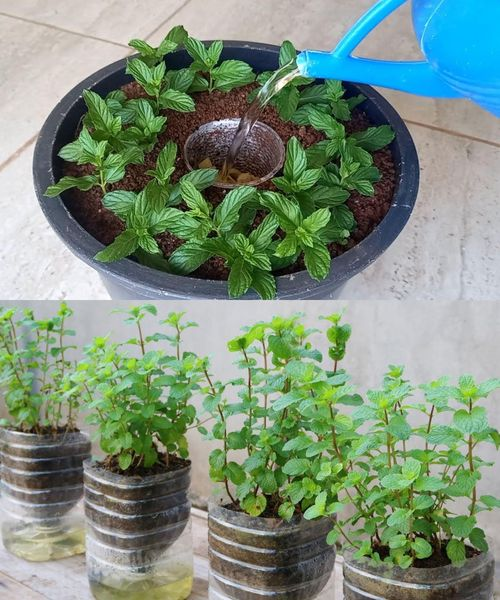ADVERTISEMENT
Mint is one herb I won’t live without. I enjoy the occasional mojito, but my favorite way to enjoy mint is as an herbal tea. I use dried mint leaves to brew both hot and iced tea, and in the summer I make a weekly batch of sun tea with the fresh leaves. Since mint is notorious for its rampant growth (it can quickly take over the garden), I grow my mint in patio containers. I also grow mint year-round indoors. This means I have fresh mint leaves to harvest 12 months of the year. Today, I’d like to share information on how to grow mint indoors using three different techniques.
Why grow mint indoors
Mint (Mentha species) is a perennial that produces new foliage all year long if the stems are not killed by frost, making it one of the easiest herbs to grow inside. There are hundreds of different species, hybrids, and cultivars of mint. Some are more common than others when it comes to their flavor and popularity. Unlike many other herbs, mint is very easy to grow indoors, as long as you give the plant enough light and consistent moisture (more on both of these in a later section). Mint also makes a surprisingly beautiful houseplant. I love mint’s crinkly green leaves and how the stems of some varieties tumble down over the sides of the pot. I’ve even had mint plants bloom indoors in the dead of winter.
Yes, mint is attractive, but most of us don’t grow herbs for their good looks. We grow them for their flavors, and what could be better than snipping your own fresh, homegrown mint leaves to make a cup of hot tea on a cold day? Since mint is constantly making new stems and leaves, you’ll always have a few sprigs ready for harvest.
Another reason to learn how to grow mint indoors is for the fragrance. Whenever I need a little pick-me-up on a dreary day, I simply pinch off a leaf, rub it between my thumb and index finger, and inhale. The fragrance of mint is energy-boosting and invigorating. You can even toss a few leaves into your bath water for a fragrant, muscle-soothing soak.
One final benefit of growing mint indoors is a lack of pests. Aside from the occasional fungus gnat, I’ve never had any houseplant pests attack my mint plants.
Sourcing mint plants for indoor growing
When considering how to grow mint indoors, your thoughts might first turn to sourcing the plants. You have several options. For me, the easiest route is to purchase a starter plant at my favorite local nursery. However, if it’s autumn or winter and you’re just learning how to grow mint indoors, you might find your local nursery out of stock. Most nurseries carry herb plants only in the spring. If this is the case for you, consider starting a new mint houseplant from a root division or a stem cutting.
Sourcing an indoor mint plant from a root division:
If you already have a mint plant growing in a container or in the ground – or if you have a friend or family member who does – it’s easy to dig up a division of the plant, pot it up, and bring it indoors. As long as there is a section of root attached to a stem, it’s a viable division. You can start with a large division or a small one. Mint grows fast, so even if you start with a tiny division, before you know it, the plant will fill your pot.
Sourcing an indoor mint plant from a stem cutting:
This method of growing mint indoors only requires a severed mint stem about 3 inches long. Mint cuttings easily take root. Simply remove the lowest leaves, stick the bottom inch of the cut stem into a pot of new potting soil, water it in, cover the pot and cutting with a plastic baggie, and put it on a windowsill for 3 weeks. You can opt to use rooting hormone to speed up the rooting process if you want, but it’s not necessary. When 3 weeks have passed, remove the baggie and you have yourself a new mint plant for growing indoors. You can also root mint in water, which is discussed in a later section.
Continued on next page
